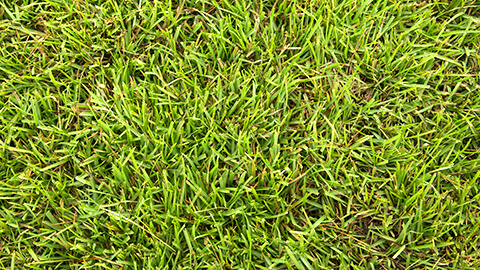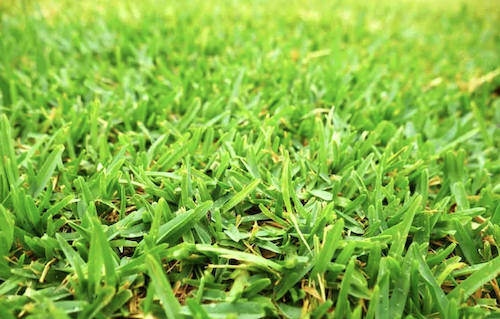Compare Sod Types
Buffalo vs. Centipede Sod
Let's dive into a side-by-side comparison of these two grasses. We're looking at everything from cost and looks to how well they stand up to drought, shade, and foot traffic. Stick around to see which one comes out on top!


Price
Which costs more, Buffalo or Centipede sod?
Between these two, Centipede is typically on the pricier side with an average cost per square foot of $0.73. On a per pallet basis, which is usually how sod is sold, this comes out to roughly $362.50 per pallet.
Buffalo on the other hand, is a more moderately priced at $0.68 per square foot (on average). This comes out to around $337.50 per pallet.
Editor's note: It's important to remember that both of these are averages based on data from around the country so cost can vary depending on your location. Keep in mind this doesn't include other fees like delivery or installation.
See our sod calculator to get a comprehensive sod estimate. →
Sun & Shade
Which grass grows better in the shade?
Buffalo Grass, adapted to open plains, prefers full sun and requires at least 6 to 8 hours daily, underperforming in shady spaces.
Similarly, Centipede Grass requires about 4 to 6 hours of sunlight but can handle light shade, surviving with slightly less sun if needed.
Appearance
Which one looks better? You decide.
When choosing between sods like Buffalo (pictured lefttop) and Centipede (pictured rightbottom), personal preference plays a significant role, but understanding the nuances of each type's appearance can guide your decision. Here's what to consider:


Buffalo Grass rolls out a soft, blue-green carpet with thin blades, giving you a lawn that feels soft to walk on and adds a touch of the prairie to your backyard.
Centipede Grass, with its unique light green shade and soft leaves, creates a laid-back, low-growing lawn that feels easy underfoot and is fuss-free to maintain.
Drought Tolerance
Which one needs more water?
Buffalo Grass is naturally adapted to arid conditions, requiring minimal watering to maintain its health and appearance.
On the other hand, Centipede Grass offers above average but not great drought tolerance, often bouncing back from dry conditions once regular watering is resumed.
Takeaway: If you're located in a somewhat dry and arid geographic region and are looking for a grass that can handle drought-like conditions, Buffalo is the better option between Buffalo and Centipede.
Grow Zones
Cold or warm weather - which do they prefer?
Buffalo is well-suited for growth in warmer climates. The ideal temperature range for laying Buffalo sod is between 70°F and 85°F.
Centipede is well-suited for growth in warmer climates. When it comes to laying sod, the ideal range for Centipede is also between 70°F and 85°F. If you choose to lay outside of the ideal range, you can still have success, but it may take a longer time to esablish and require a bit more maintenance.
As you may have noticed, both Buffalo and Centipede thrive under pretty similar climatic conditions!
Lawn Traffic Tolerance
Which sod handles heavy foot traffic better?
Buffalo Grass has low to moderate traffic tolerance and is best for less-trodden areas, but it can endure gentle play and relaxation time.
On the other hand, Centipede Grass has moderate foot traffic tolerance and is best for lower-use areas, but it can handle occasional gatherings and games in the yard.
Takeaway: If you're looking for a grass that can handle heavy foot traffic, they are pretty similar in this capacity, so you'll probably want to make your decision based on other factors.
Establishment Rate
Which grass grows faster?
Buffalograss, a true prairie grass, is slow to establish but eventually forms a low-maintenance turf that's ideal for the Great Plains and similar regions.
Centipede grass is a slow-growing, low-fertility requirement grass that gradually establishes to form a low-maintenance, dense carpet ideal for acidic soils in warm climates.
Net, net - if you're looking for a grass that establishes quickly, they are pretty similar in this respect, so feel free to go with either one!
Pest & Disease Resistance
Which handles pests better?
Buffalo Grass generally resists pests well, though it can attract mealybugs and mites; it's also notably resistant to many diseases, thriving in varied environments.
Centipede Grass has moderate resistance to pests and some fungal diseases, but it can be susceptible to nematodes and needs care to prevent issues.
TLDR - if you're looking for a grass that wards off pests and disease, they are pretty similar in this respect, so feel free to go with either one!
Which Is Best?
Which sod is better, Buffalo or Centipede?
Alright it's time to count the scores up.
Most blogs or articles are going to give you a wishy washy "it's up to you" speil. That is definitely true. You'll need to choose based on your geographic conditions and what you like most looks-wise.
That being said, if we just compare the scores based on the following measures. Higher is better in this case.
- Average Cost: 5 for Buffalo, 4 for Centipede
- Shade Tolerance: 4 for Buffalo, 5 for Centipede
- Drought Tolerance: 9 for Buffalo, 6 for Centipede
- Traffic Tolerance: 4 for Buffalo, 4 for Centipede
- Establishment Rate: 5 for Buffalo, 5 for Centipede
- Pest & Disease Resistance: 6 for Buffalo, 6 for Centipede
Drumroll please...
All in all, Buffalo comes out on top with a score of 33/60 versus 30/60 for Centipede.
Thanks for reading! If you have any feedback or corrections for us, please email our editor at editor@sodcalculator.com.
Frequently asked questions (FAQs)
Can't find the answer you're looking for? Reach out to us directly at team@sodcalculator.com
Which is better for dogs, Buffalo or Centipede sod?
Neither Buffalo nor Centipede are particularly durable; however, they aren't at the bottom of the pack either. For both Centipede and Buffalo, it will come down to how rough your pets are on the turf.
Will Buffalo overgrow Centipede?
Neither Buffalo nor Centipede are particularly aggressive growers. Centipede is not likely to overtake Buffalo, and vice versa.
Can you mix Buffalo and Centipede sod?
It's not recommended to mix Buffalo and Centipede sod. Mixing sod types can lead to uneven appearance and issues with lawn health. It's best to choose Buffalo or Centipede sod and stick with it.
Which costs more, Buffalo or Centipede sod?
Neither Buffalo nor Centipede are particularly expensive or cheap at between $350.00 - $375.00 per pallet. Centipede and Buffalo both offer a balance between cost and characteristics.
Is Buffalo or Centipede sod better for shade?
Neither Buffalo nor Centipede are particularly tolerant of shade; however, they aren't at the bottom of the pack either. The heartiness of Centipede and Buffalo will come down to how much sunlight your lawn gets.
What are the main differences between Buffalo and Centipede?
The main differences between Buffalo and Centipede are in their cost effectiveness, drought tolerance, and popularity. Buffalo performs better in drought tolerance, while Centipede performs better in cost effectiveness and popularity.
More Buffalo Comparisons
More Centipede Comparisons
- Centipede vs. Bermuda Comparison →
- Centipede vs. Zoysia Comparison →
- Centipede vs. Tall Fescue Comparison →
- Centipede vs. Kentucky Bluegrass Comparison →
- Centipede vs. Perennial Ryegrass Comparison →
- Centipede vs. St. Augustine Comparison →
- Centipede vs. Fine Fescue Comparison →
- Centipede vs. Bahia Comparison →